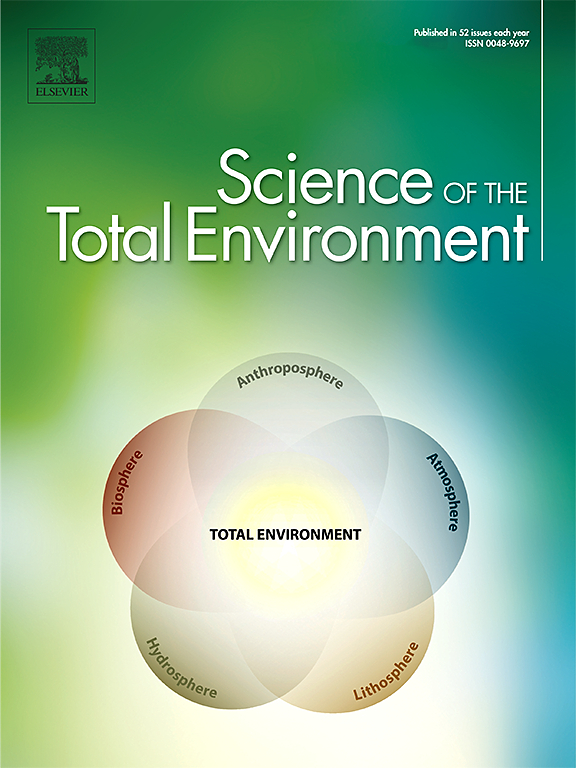Arsenic and zinc cycling in Cambodian rice fields of the Tonle Sap floodplain
IF 8.2
1区 环境科学与生态学
Q1 ENVIRONMENTAL SCIENCES
引用次数: 0
Abstract
Cambodians heavily rely on rice as an essential staple food crop and source of income. The Tonle Sap floodplain is one of Cambodia's largest rice-producing regions. Natural flooding and irrigation on paddies within the floodplain likely influence the cycling of important trace elements such as zinc (Zn), an essential and often limiting micronutrient, and arsenic (As), a toxin for both humans and plants. We explored temporal and chemical factors that govern As and Zn deposition, availability, and uptake in Tonle Sap rice fields in the context of changing flooding dynamics. To this end, we collected surface soils, flood sediment, and plants across four cropping cycles in Steung Saen Municipality of Kampong Thom Province. We found that sediments deposited during the flood season acted as a source of labile As, Zn, and iron (oxy)hydroxide minerals that carry both As and Zn. However, it was not until soils dried between the two seasons that actual Zn uptake into plants increased. No such relationship was observed for As. Soil bioavailable Zn (i.e., DTPA-Zn) strongly predicted the transfer of Zn from soil to leaves and grains. Leaf concentrations of Zn and As were associated with less efficient translocation from vegetative tissue to grain, as measured by their respective grain/leaf concentration ratios. We also observed signs of differential uptake pathways for Zn into grain in response to seasonal differences in Zn availability. Lastly, our findings suggest that Zn may be involved in the in-plant translocation of As, presenting an important trade-off in breeding high-Zn and low-As rice varieties. Our work shows the interconnected nature of hydrologic cycles, agriculture, and food/nutritional security in the Tonle Sap Floodplain as it relates to trace elements. These findings can help to predict and manage changing Zn and As dynamics in this important and vulnerable region.

求助全文
约1分钟内获得全文
求助全文
来源期刊

Science of the Total Environment
环境科学-环境科学
CiteScore
17.60
自引率
10.20%
发文量
8726
审稿时长
2.4 months
期刊介绍:
The Science of the Total Environment is an international journal dedicated to scientific research on the environment and its interaction with humanity. It covers a wide range of disciplines and seeks to publish innovative, hypothesis-driven, and impactful research that explores the entire environment, including the atmosphere, lithosphere, hydrosphere, biosphere, and anthroposphere.
The journal's updated Aims & Scope emphasizes the importance of interdisciplinary environmental research with broad impact. Priority is given to studies that advance fundamental understanding and explore the interconnectedness of multiple environmental spheres. Field studies are preferred, while laboratory experiments must demonstrate significant methodological advancements or mechanistic insights with direct relevance to the environment.
 求助内容:
求助内容: 应助结果提醒方式:
应助结果提醒方式:


